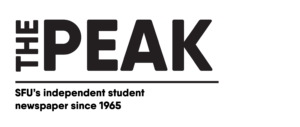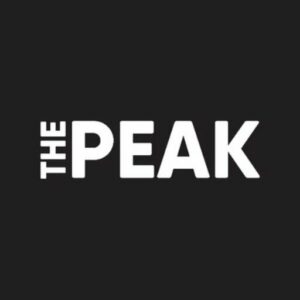Written by: Karissa Ketter, News Writer
Content warning: descriptions of residential school abuse, anti-Indigenous racism, and genocide
The remains of 215 Indigenous children were found near a residential school in Kamloops on May 27, 2021. Their identities are not yet known. While experts said it is difficult to “pinpoint with certainty the causes of death,” the findings revealed these are “missing Indigenous children who were unaccounted for in the known death toll” of the residential school system.
“When the news broke — and we were seeing it everywhere on social media — I was just heartbroken. And the grief is so intense,” said Cecelia Reekie, a Haisla Nation cultural presenter for the Langley School District.
According to the Indian Residential School History and Dialogue Centre, the Kamloops school was the largest residential school in Canada. It was opened in 1890 by the Roman Catholic Church and was active until July 31, 1978.
The residential school system was funded by the Canadian government. Catholic, United, and Anglican churches ran over 130 schools from the 1870s until the last school closure in 1996.
“The purpose was to get rid of the ‘Indian problem,’” described Reekie. “We were in the way of the land. We were in the way of the resources.”
In 1920, the Deputy Minister of Indian Affairs in Canada stated the objective was “to continue until there is not a single Indian in Canada” who had not been assimilated into the population. The Union of Ontario Indians explained that assimilation was “deemed to be the most effective way to ‘civilize’ the Indians.” Facing History explained that European imperialism inspired colonizers to force Indigenous peoples to conform to European society.
The Canadian Encyclopedia estimates 150,000 Indigenous children attended residential schools. The estimated number of deaths is still unknown. The previous death toll for the Kamloops Indian Residential School had been 52 — the discovery of 215 remains demonstrated that the majority of childrens’ deaths went unreported and unregistered across BC.
“It was just heartbreaking. I was just so sad and felt so heavy, and they’re babies. They were somebody’s babies. I try to word it that way because I think that helps people understand,” said Reekie. She believes calling them “children” makes the discovery “too easy” for Canadians to accept. Understanding the victims as somebody’s babies helps to show people the devastation felt by families and communities, when their babies were never returned, Reekie explained.
While Canada acknowledges residential schools as cultural genocide, some have asked for them to be reclassified as a genocide. The United Nations defines “forcibly transferring children of the group to another group” as a form of genocide. While the Truth and Reconcillation Comittee (TRC) has already condemned residental schools as cultural genocide, “there is ample evidence” in reports that state “intentions, legislation, actions and legacies of genocide,” according to The Conversation.
At the schools — which some consider to be internment camps — girls were forced into housekeeping tasks such as cooking, cleaning, and laundry. Boys were forced into labour such as carpentry, maintenance and agriculture.
There are widespread reports of severe malnourishment, excessive punishment, neglect, physical abuse, sexual abuse, and mental torment. Disease outbreaks such as tuberculosis, influenza, smallpox, and measles were common due to malnourishment and overcrowding.
“There will be many more babies across this country who need to be brought home. There wasn’t just 215,” said Reekie. “The truth must come out. We have to do all we can to ensure that every child who died in residential school has a name.”
Children ages four to 16 were forcibly removed from their parents to be taken to residential schools. They were given European names in effort to assimilate them with Europeans. Children were punished if they used their Indigenous names. Minister of Aboriginal Affairs Stephen McNeil told the CBC, “Their name, like much of their identity, was taken away from them.”
“This is a very pivotal time in Canada right now,” explained Reekie. “Around the world people are going to be watching Canada to see what we do.”
Political leaders at all levels and the Catholic, United, and Anglican churches in Canada, “need to have difficult conversations about who they are and what they are and what they represent,” said Reekie.
Vancouver Catholic girls’ school, Little Flower Academy (LFA), was opened in 1927 by the Roman Catholic Church as a residential school. LFA students called on the Roman Catholic Church to apologize for their participation and to stop “glorifying colonization.”
In a statement released by LFA, they said, “It is our responsibility to teach the truth about the residential school system; to deepen our collective understanding of the intergenerational harm that the residential school system caused; to acknowledge the role of the Catholic Church within these schools.”
According to Reekie, it will be these difficult conversations where Canadians will be able to “break down those barriers, the same way schools need to break down their systemic racism.
“They have to be conversations and they have to be out in the open, so that, as Indigenous people, we can see those conversations happening, and we need to be a part of those conversations,” said Reekie.
For Reekie, a key part of this process is first giving Indigenous peoples space to grieve. “We need to stand with the Indigenous communities as they come to terms with this [ . . . ] We need everybody to stand with them, not just flying flags, not just wearing orange shirts.
“For those who already think they know the history, we need to continue to learn. We need to continue to understand. We need to have compassion, empathy with each other. I’m sure there’s many non-Indigenous people who are also feeling that the country that they thought they understood, maybe they didn’t understand as well,” said Reekie.
Reekie noted her disappointment in Justin Trudeau’s response to the uncovering of Indigenous children. “I would have thought that there would have been much more significant action than just words the last week. Words are wonderful, but it’s going to be the action that is really determinant in [ . . . ] what our country is going to look like.”
Justin Trudeau recently released a statement regarding Missing and Murdered Indigenous Women, Girls, and Two-Spirit People. After new policy recommendations, Reekie asked, “Why hasn’t this happened before? Why wasn’t it important before last Friday? Maybe we need to ask ourselves that — maybe we as Canadians need to ask ourselves, why has it taken 215 babies to get us moving?”
Reekie believes it is important for all levels of government to consider the 94 Calls to Action that the TRC published in 2015. These call on the federal, provincial, and territorial governments to reduce harm being done to Indigenous populations across a wide scope: child welfare, education, language and culture, health care, justice, and reconciliation.
Reekie said it is crucial for the government to “find space for our people to have that voice and to be able to move [this country] in a direction that it’s not wanted to go, but it needs to go now.”
The Calls to Action in child care include ensuring social workers are well educated and trained in culturally appropriate environments for young children. It includes the understanding between the connection of the foster system and residential schools, and aims to keep Indigenous families together as often as is safe to do so.
Developing a culturally-sensitive education curriculum, honouring existing Treaties, and closing health gaps such as infant mortality, suicide, addiction, and chronic diseases between Indigenous and non-Indigenous peoples are also components of the 94 Calls to Action.
“A life lesson my dad taught me is to walk softly, and maybe we all need to just walk softly right now,” said Reekie.
Starting next week and spanning the remaining issues of this semester, The Peak will be publishing each of the 94 Calls to Action of the Truth and Reconciliation Commission.
Resources:
- Connect with an Indigenous Counsellor at SFU
- ISC Wellness Program at SFU
- MySSP (Indigenous counsellors available)
- First Nations Health Authority – Mental Health Benefit
- Indian Residential School Survivors Society – 24 Hour Crisis Line
- KUU-US Crisis Line Society – 24 Hour Crisis Line
- Métis Nation BC – Mental Health Services







































[…] President Joy Johnson announced on June 7, 2021 that SFU had lowered their flags to “honour the lives and memories of the children found at the burial site of the former Kamloops Indian Residential School.” […]